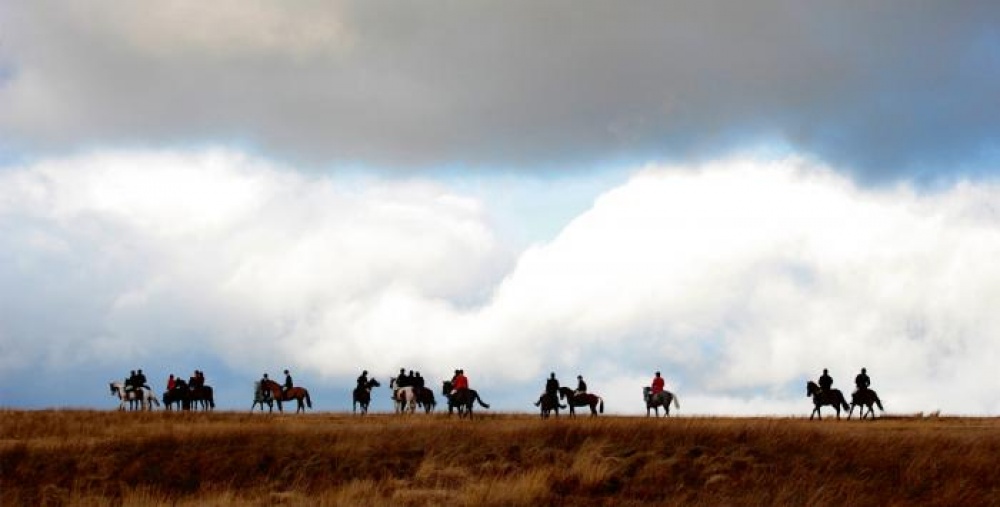Hunting in the North East

Hunting has changed a lot over the last turbulent decade. Living North caught up with one North East hunt to find out about modern life in the saddle
This season marks the 10-year anniversary of the Hunting Act being passed in Parliament which made it illegal to hunt foxes with dogs. The result was that hunts had to chase an artificial scent instead. At the time, many feared that it spelled the end for hunting, that whole communities would crumble and the associated trades would cease exist. That has not been the case.
Andrew Spalding, Joint Master of the Zetland Hunt which borders County Durham and North Yorkshire, says, ‘We’ve actually had an increase in members since the Act, as have a lot of other hunts in the country. What the ban did was actually save many hunts from going out of business, as a lot of the smaller ones were finding it financially very difficult to continue. The ban in 2004 made people take more notice of what hunts were doing and come out and show their support, which has helped to keep us financially viable.’
Today the Zetland Hunt, which covers an area of 20 square miles from the River Wear in County Durham to the River Swale in North Yorkshire, boasts 70 to 80 mounted and 30 unmounted members, and is regularly joined by the local community who show their support at meets and big hunts such as the one on Boxing Day.
‘For our Boxing Day hunt we get 100 people on horses and between 800 and 1,000 people on foot, depending on the weather. There’s always a tremendous crowd,’ says Andrew. ‘Once they’ve come out and supported us, people have then decided it’s a great way of spending a day. They want to do it more and more, because it’s a wonderful way to see different parts of the countryside, get out and about, and meet like-minded people.’
Like-minded people isn’t just code for those with rural professions or big houses in the countryside. ‘All spectrums of people come together. ‘We have pilots, accountants, vets, doctors, council workers — we basically encompass everyone,’ explains Andrew, who has been with the hunt since 1966, and who became interested in hunting through his father, who was a Field Master for nine years.
Although those who want to follow the hunt on quad bikes are usually dissuaded from doing so, the Zetland Hunt has a lot of foot followers who follow the chase in their cars, as well as people running with the Hunt who can access more of the difficult-to-access areas than the mounted members can, keeping track of the trail.
‘Before the ban, the actual art of hunting was how it had been for hundreds of years. Now we’re trail hunting and laying scents to follow. We’re regimented in what we can and can’t do,’ says Andrew.
The dogs are also learning new tricks. ‘We start scent-training the young hounds in September,’ explains Andrew. ‘We have to train them to follow the scent that we use for laying the trails. It takes a while to get them used to the right scent and also to become disciplined to follow it.’
As the trail has to be predetermined before the hunt takes place, it means that some of the thrill of the chase no longer exists but the hunt now enjoys better relationships with the local farmers as they work together to discuss what land they can access and establish agreed boundaries within which the hunt members are allowed to go.
Although hunts have had to change their hunting practices, Andrew is passionate that hunting traditions are still retained. ‘We try and instil manners and etiquette into our followers; to respect the landowners and to show courtesy to people in the countryside. People still make an effort to wear hunting pink, and our huntsman still sounds the call to signal the start of the hunt.’
Andrew hopes that, despite the modern changes to hunting practices, it can still be enjoyed for generations to come. ‘That’s why we keep the hunt going, to encourage the young, so we hope it can have a real and exciting future.’
Join a Hunt
College Valley & North Northumberland Hunt
The country covered by this hunt includes the Cheviot Hills, Harthope Burn and Glendale Valley as well as the coastal strip by Holy Island, Berwick-Upon-Tweed and the Scottish border.
www.cvnnh.org.uk
The Tynedale Hunt
Their kennels are based at Stagshaw Bank, just north of Corbridge, and they operate in an area ranging from the River Tyne to the River Wansbeck and from Hexham to Ponteland.
www.tynedalehunt.org
The Zetland Hunt
Covering an area of 20 square miles from the River Wear in County Durham to the River Swale in North Yorkshire, with their kennels based at Aldbrough St John.
www.zetlandhunt.org



